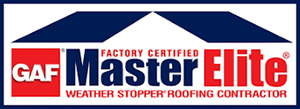 Avoid nasty and expensive repairs – prepare your home for a harsh winter! Avoid nasty and expensive repairs – prepare your home for a harsh winter!
Winter means a lot of things! Chilly mornings. Inclement weather. Dressing in layers. And as your friendly roofer, I can tell you that it means roof damage! It’s like clockwork… Every winter we have unfortunate homeowners who need us in a hurry because a leak has unexpectedly sprung. There’s nothing more aggravating than when a pricey problem pops up. To help you avoid the frustration, aggravation, and concern of an emergency repair, here are six steps to prepare your roof for the harsh winter! 1. Start off by checking the roof-framing structure to make sure it is not compromised. Visually scan the roof for any sagging or uneven areas. If you do see an area that looks uneven, this may mean damage to the roof deck below the shingles. 2. Inspect the gutter systems to make sure they are not clogged with branches, leaves, or other debris. This is important to ensure that rain water and snow have a way off of the roof. If the water or snow is left standing on the roof, there is an increased likelihood of leaking or ice damming. 3. Make sure that gutters are fastened properly and are tight and secure so that they don’t cause overflow or buildup—or fall off the fascia board. Leaking water can end up causing damage not just to your roof, but also to your interior walls. 4. Check the valleys of the roof to ensure that they are free and clear of debris that can add weight to the roof and also act as a barrier to rain and snow. Leaks frequently occur in the valleys so make sure they are well protected by a proper roofing system. 5. One of the most common causes for roofing leaks is due to problems with flashing. Flashing is the aluminum or metal material that is used in roof-to-wall transitions over joints to prevent water from seeping in and causing damage. Metal flashing should be used around roof vents, pipes, skylights, and chimneys. Remember that flashing can be loosened or torn by high winds and heavy rains, so inspect the areas annually. 6. Lastly, you should walk around to carefully inspect the shingles on the roof—look for curling edges, missing granules, and certainly for missing shingles or damage from birds, rodents, or squirrels. |
Call Now: (314) 378-6623Call Us: (314) 378-6623
Service Area
Copyright Schneider Roofing & Remodeling - All Rights Reserved.
Roofing Web Design by Silver Scope Web Design St. Louis, MO















